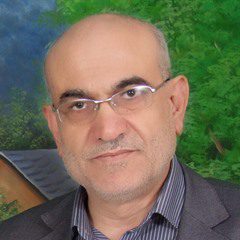Western officials are currently wavering over proposals to list the Muslim Brotherhood as a terrorist organisation. This applies to the Trump administration, despite its extremist rhetoric and its proximity to circles known for their hatred of the Muslim Brotherhood.
This also applies to some Arab regimes, which are caught between advocates of complete criminalisation and advocates of dialogue. These regimes keep taking a step towards criminalisation through a statement or position then backing down, hosting figures thought to be affiliated with the Brotherhood or communicating with one of its branches.
All these positions face a fundamental problem – that the Brotherhood is not an organisation in the real sense of the word so much as an intellectual and political current. This is similar to the Salafi current, for example, which includes within it many different trends that are difficult to reconcile, from Daesh and Al-Qaeda through to reformist movements that believe in political action within the existing framework, as well as groups that advocate obedience to the ruler even if he abuses his people and plunders their wealth.
Read: Daesh are an offshoot of the Muslim Brotherhood
While the Brotherhood may not include such a wide array of conflicting views as the Salafi trend, the reality is that it is a current and not a group. This is regardless of the fact that, during some periods, groups within this current gathered within the so-called “International Organisation”. This gathering did no more than grant legitimacy to the group, and included groups that did not bear the Muslim Brotherhood name, such as Ennahda and the Islamic Group in Lebanon. Each of these organisations acts according to the requirements of its context and the vision of its leadership, sometimes in complete contradiction with the vision held by other Brotherhood branches, including the largest branch in Egypt.
The strongest evidence for this is the Muslim Brotherhood in Iraq, whose position on the American occupation of Iraq went directly against the position adopted by all Muslim Brotherhood branches without exception. Despite this, they continue to be seen as part of the Brotherhood.Over the decades since the rise of the Islamic awakening and the Muslim Brotherhood in the early 1980s (so as not to go too far back in history), the political positions of Muslim Brotherhood groups in different regions have differed greatly, from taking up arms against government – as was the case in Syria in the early eighties – to full recognition of regimes, alongside demands for reform.
Read: Egyptian court sets date for retrial of senior Muslim Brotherhood officials
Classification becomes even more difficult when groups that were not connected to the “International Organisation” are included in the group – for example, Turkey’s Justice and Development Party (AKP) (which is opposed domestically by the Turkish Saadet party, which is, in fact, closer to the Muslim Brotherhood than the AKP), the Justice and Development Party in Morocco, and some groups in Asia. This shows that the difficulties of classification are very real and complex.
However, the nation-state (or the divisive state) has imposed itself on the divisive Brotherhood and the latter has dealt with the nation-state as a reality. Each branch came to build its policies based on what it saw as the national interest, which sometimes led to conflicts with other branches. Saddam Hussein hosted the Syrian Muslim Brotherhood while persecuting their Iraqi counterparts. Hamas was hosted by the Syrian regime while the punishment for membership of the Syrian Brotherhood was execution under Syrian law. These are just a few of many examples one could give.
Read: Egypt’s Al-Azhar University denies appointment of Muslim brotherhood teachers
What can be concluded from this is that it is unfair to attack the Muslim Brotherhood as if they were a single homogenous group and to place them all in one basket. In official terms, it appears to be impossible to place all the Muslim Brotherhood in one basket. The majority of the Brotherhood’s members are against the use of violence, including the Egyptian branch, despite accusations that try to link them to the actions of a few young men who left the organisation and responded to violence with violence.
The conclusion we can draw from this is that the question of proscribing the Brotherhood is nothing more than persecution of a political rival that has nothing to do with terrorism or violence, using all means available. However, it is worth bearing in mind that persecution does not eradicate movements with intellectual and social roots, even if they decline or weaken for some time.
Translated from Al-Arab, 23 April 2017.
The views expressed in this article belong to the author and do not necessarily reflect the editorial policy of Middle East Monitor.

![Vice chairman of the Freedom And Justice Party Mohamed Beltagy (L), Senior political figures of the Muslim Brotherhood Saad El-Katatni (C) and Vice chairman of the Freedom And Justice Party Essam el-Erian (R) gesture during a trial session over the Wadi el-Natrun prison case at Cairo Police Academy in Egypt on February 26, 2017 [Moustafa El Shemy/Anadolu Agency]](https://i0.wp.com/www.middleeastmonitor.com/wp-content/uploads/2017/02/20170226_2_22078769_19302011.jpg?fit=920%2C613&ssl=1)

![Leader of Tunisia’s Ennahda Party, Rachid Ghannouchi [file photo]](https://i0.wp.com/www.middleeastmonitor.com/wp-content/uploads/images/article_images/people/rashid-ghannouchi-6.jpg?resize=920%2C613&ssl=1)






